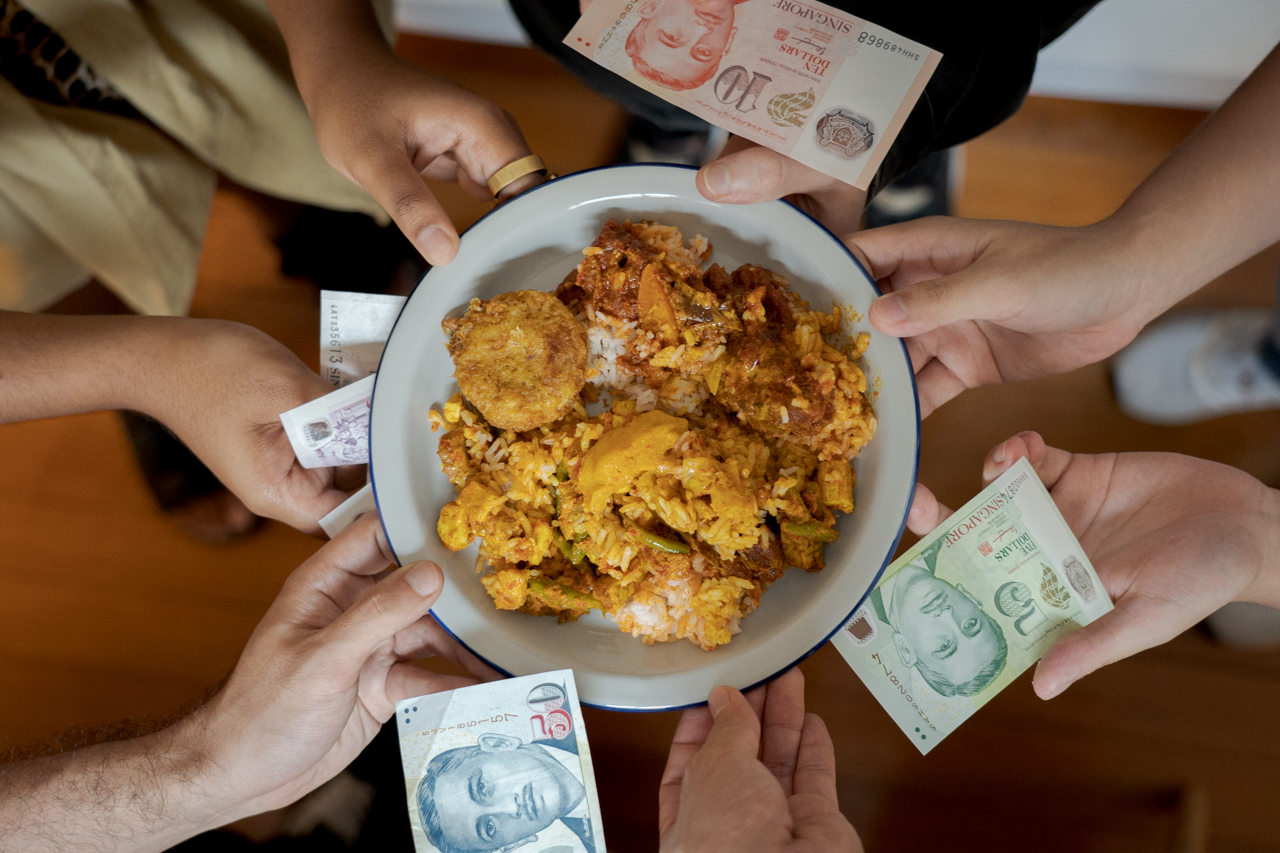Three men walk into a hawker centre.
The first is a 25-year-old Kiwi who goes by the name Ben. Ben looks like your typical ang moh: blue-eyed, muscular, and fair-skinned. Next to him, is 28-year-old Fauzi. In direct contrast to Ben, Fauzi is a skinny Singaporean man with caramel-coloured skin. And if it isn’t obvious from his name, yes, Fauzi is Malay.
Finally, there’s me, Justin. Like Fauzi, I too was born and raised on this sunny island. However, similar to Ben, ang moh blood runs through my veins. I’m Eurasian.
It’s lunchtime in the CBD and after a quick discussion on what to have for lunch (“shortest queue wins”) we decide to head to the nasi padang stall.
There, we order the same combination of dishes: beef rendang and long beans, all atop a mountain of white rice drizzled with lontong gravy. Oh, and a small dollop of belachan for good measure.
In Bahasa Melayu: nasi putih makan satu, rendang, kacang panjang dengan kuah lontong. Sambal belacan sekit.
As we put our change away, the three of us discover that something quite literally didn’t add up. Ben and I paid $4.50 for our meal. Fauzi, on the other hand, only paid $4.
Eh? What gives? All 3 of us ordered the exact same thing, from the exact same stall, and the exact same makcik. Why was there a difference in price?
Welcome then, to the curious world of “Malay pricing”. Known to Singaporeans as a racially-motivated form of price discrimination, Malay pricing, as you would expect, commonly refers to those who look, or are Malay being charged a cheaper price for the same item than your Chinese Singaporean.
Little has been said about this curious phenomenon, yet it seems like everyone agrees it’s “a thing”. We’ve all heard about a friend of a friend who was charged “more” for his meal as compared to his Malay pal. Maybe it’s even happened to you. But this is where it gets tricky: much of the evidence behind Malay pricing is anecdotal. What happens at one nasi padang stall may not happen at another—if it even happens at all.
Also, to my knowledge, no one has ever tried to figure out if there was anything besides race that could possibly account for the price difference. Or the conditions/criteria that have to be met before this price discrimination occurs.
In other words, no one has ever put Malay pricing under the microscope.
Until now.
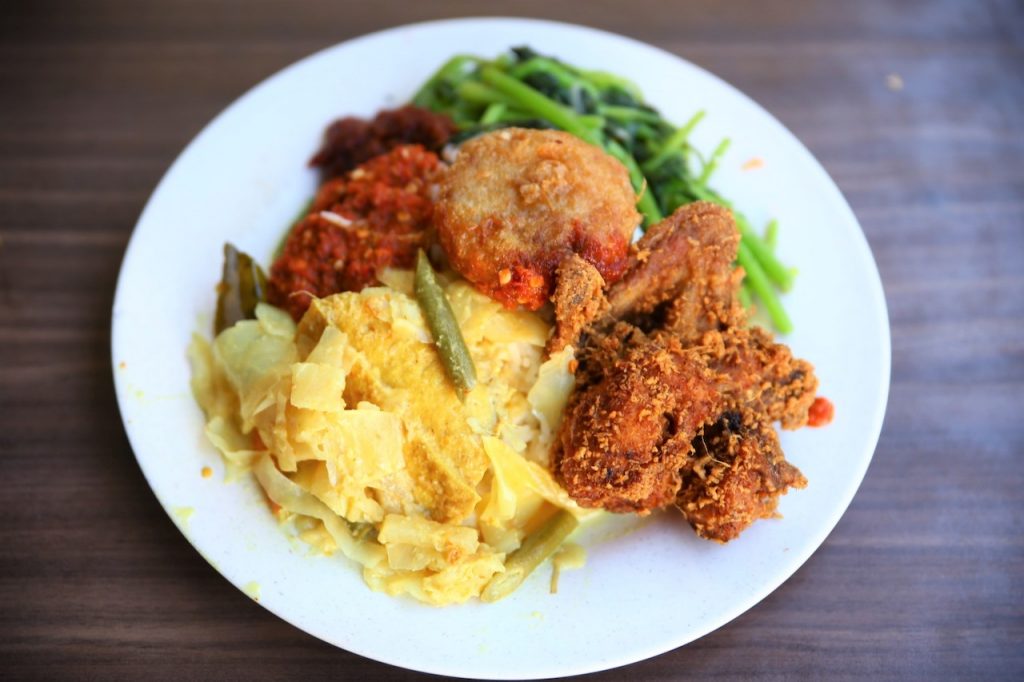
To try and make sense of what happened during that fateful lunch, Ben, Fauzi, and I designed an experiment. We each had our own theory as to why this flexible pricing existed, but without the scientific method, it was all just conjecture. And so, following another quick discussion on what our dependent/independent variables should be, we went about our research.
Equal parts hungry for knowledge as well as good nasi padang, our first stop is the stall near where I live. After being introduced to the wondrous world of Malay cuisine at the ripe old age of 15, this stall soon became my go-to place whenever I had a hankering for bergedils or sambal goreng.
13 years’ worth of weekly visits meant I was a bona fide regular customer. The matronly makcik knew me—maybe not by name, but by face. Whenever she saw this “handsome” (her words, not mine) boy coming, there was always the widest of grins plastered on her kind face.
Arriving at the stall with my 2 buddies, we pretend not to know one another and take turns to order the same dishes: rice, sambal squid, a bergedil, and a serving of—yup, you guessed it—sambal goreng. But while makcik appears friendly with Fauzi and Ben, their interactions are nothing more than that of a customer and seller. It’s not personal, unlike how makcik never fails to ask about my mother and how she’s doing.
This is also when I discover makcik’s special smile isn’t for just anyone. It’s not given freely, but has to be earned. Which probably has something to do with why my plate of delicious home-made goodness is a dollar cheaper than both Ben and Fauzi’s.
What’s blindingly obvious is that this wasn’t a case Malay pricing as we—and everyone—knew it. Now, I don’t know if makcik has a degree in business/economics, but the dollar discount I received from her made perfect sense—it was simply a way of retaining a long-time customer.
One of the first things they teach you in business school is that short and long-term profit are two very different things. A few lectures later, comes the lesson on how a loss isn’t always a loss per se. Translation: sometimes, losing a bit of money now is necessary in order to not just turn a profit down the road, but to also keep that cash coming in in the long run.
We most commonly see this when a business is first starting out. After an initial capital outlay, these businesses work towards their break even point, at which they can actually start generating profit.
However, after they’ve established themselves in their respective industry, these companies need to find a way to maintain a steady revenue stream. And how do they do this? They depend on their regular customers.
Any business owner worth his salt will tell you that while appealing to an entirely new segment of clients/customers is great, to ensure sustainable long-term growth, it makes more sense to ensure regular customers keep coming back.
And what kind of stall in a hawker centre has the highest incidence of repeat customers? Yup, the one that’s guaranteed to be certified halal.
Just like how bubble tea shops such as Koi and Gong Cha issue loyalty cards that promise a free drink after 10 purchases, makcik also rewards her regular customers. But she’s more old school. She doesn’t use specially printed cards or stamps. She just knocks a dollar off your plate of nasi padang.
Putting aside the possibility that makcik just wanted to do something nice to show her appreciation for my regular patronage, the informal discount meant that I would be more inclined to choose her stall instead of a competitor’s. My food is cheaper, and who knows, I might even bring friends (as was the case today).
What makcik had given me wasn’t so much a discount as it was an incentive to return.
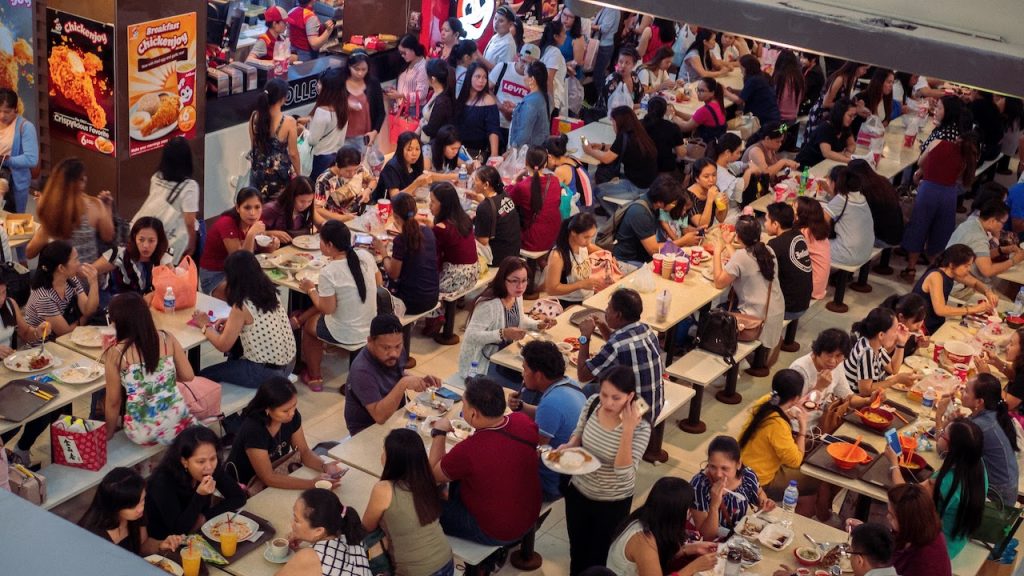
The following afternoon, the three of us put another one of our theories to the test.
This time, we sought to remove economics from the equation and focus entirely on emotion. We wanted to see if making makcik feel good could result in a change in price.
In order for the test to be as fair as possible, a stall none of us was familiar with was chosen. Once again, all of us ordered the same dishes, and once again, only one person received a discount. It’s not who you might think.
After a considerable amount of time, Ben triumphantly re-joined us at our table proclaiming he’d received a $0.20 discount on his plate of nasi padang. Fauzi and I weren’t surprised.
Here’s the thing I haven’t told you about Ben: he speaks Bahasa Melayu. Because his family migrated to Malaysia when he was a kid, he’d learnt the language in school and is now impressively fluent. But this white dude’s ability to order in Malay is just half of the reason why he’d received a discount. After all, Fauzi and I ordered in Malay too.
The other half of the equation was probably his charm. Before we approached the stall, the three of us agreed that we’d do different things while waiting for our food to be ready. Fauzi would fiddle with his phone. I’d stare into space. Ben, however, would strike up a conversation with makcik in her native tongue.
Between mouthfuls of his enormous serving of rice, Ben told us he asked about her day; about her family; about how much effort must’ve gone into preparing each individual dish. I wouldn’t go so far as to say he flirted with her; as strapping of a lad as Ben is, he’s no ladies’ man. And I mean, come on, give makcik some credit.
Paying compliments in exchange for discounted food might sound lame AF but it worked. From a distance, Fauzi and I saw a visibly exhausted makcik perk right up, a smile now upon her weary face.
Similar to how some women in all the clubs in all the land flirt outrageously with bartenders—or men in general—for free drinks, it appears a little personal attention goes a long way. And all he had to do was show makcik some genuine appreciation.
This was a textbook example of social-exchange theory.
Social-exchange theory suggests that all human relationships/social interactions are rooted in, and the result of an exchange process. More specifically, we weigh the cost (time, effort, money, etc) against the benefits (acceptance, support, companionship, etc) that the other party brings to the table before reacting accordingly. If the cost is greater than the benefits, the relationship is terminated. And if the benefits are greater than the cost? Well, as it turns out, sometimes you get a discount.
TLDR: being nice increases the chances of a favourable outcome. (Who knew, right?)
In moments, Ben managed to tip the scales in his favour. His compliments and interest in makcik’s life made her feel seen and appreciated—something she might not often get from her customers. Additionally, the ang moh’s usage of Bahasa Melayu further proved to her that she was the centre of the conversation. To makcik, Ben was interacting with her on her terms and at her level.
All of this combined, resulted in her feeling happy. She was thus more inclined to be generous towards him.
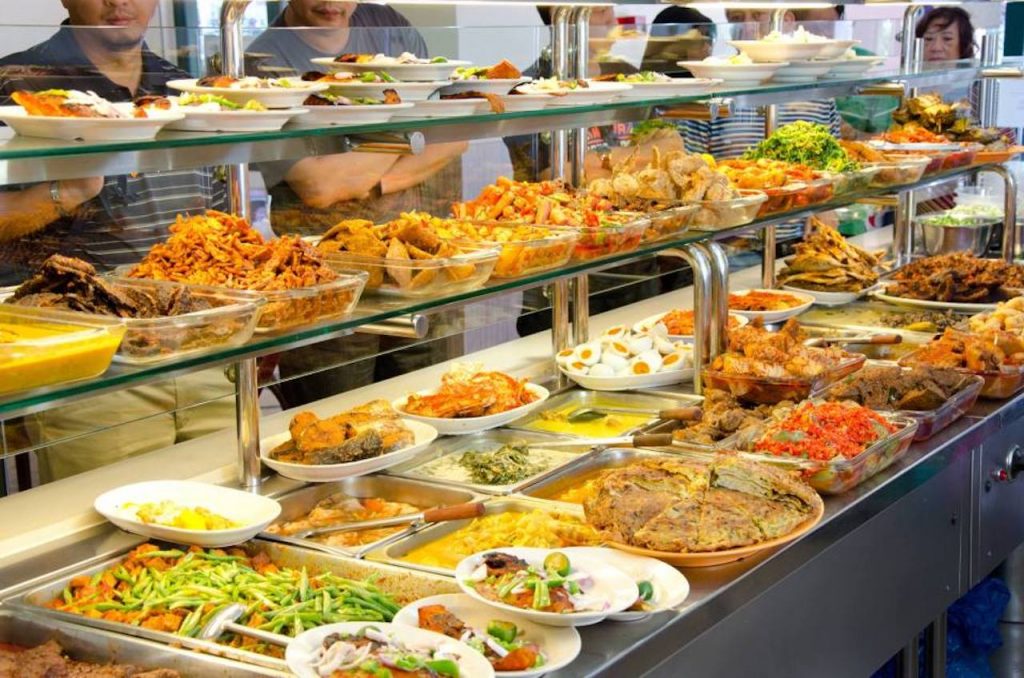
Ben and I didn’t even understand the man, let alone believe him. And so, in another busy hawker centre in the CBD, we found a nasi padang stall with a snaking queue and blindly followed our friend’s instructions.
First, we waited for Fauzi to buy his lunch. It cost him $4.30, which he paid for with a $5 note. He was given 70 cents in change. Ben was next up. He ordered the same meal but he paid with a $10 note. He received one $5 note, one 50 cent coin, and one 20 cent coin.
Then it was my turn. Armed with a $50 note, I stood in line, waited, and eventually bought what my friends did. No big deal, right? Wrong. Counting my change, we discovered I was given $46—four $10 notes and three $2 notes.
So what happened? Did makcik make a mistake in her math? Did she forget the prices of her dishes in a span of just five minutes? Possibly. But she probably just rounded the amount down so it was faster for her to give me my change and get rid of me as quick as possible.
Huh, like that also can ah, I hear you ask. And to that, I say, yes, can.
Yet another lesson you learn in business school is a little thing called queuing theory—a mathematical study of the congestion and delays of waiting in line. In a nutshell, the theory is employed by businesses like banks or fast food restaurants to develop more efficient queuing systems, processes, and arrival management strategies to reduce customer wait times and increase the number of customers served.
TLDR: Long queue = inefficient = slow service = less customers wanting to queue = less $$ made.
If you still don’t quite get the mechanics of queuing theory or understand how it helps businesses, refer to its practical application in McDonald’s. Do you remember a time when you had to actually stand in line at the counter before ordering from a cashier? Do you remember how you got so frustrated at the dude in front of you who waited until it was his turn before deciding what to eat? Or worse, customising his order more than an ah beng zhngs his e-scooter? Do you remember how you got your friend to stand in line in front of a different counter just so either one of you could jump to the one that moved faster?
Compare all that to the numerous self-service kiosks Mcdonalds has today. With the kiosks, everything is more efficient. You go in, tap a few buttons, pay electronically, and wait for your food. Everything takes all of 5 minutes. You still might have to stand in line, but wait times are drastically reduced. McDonald’s can now serve more customers in a shorter time and make more profit.
This change in operational management was no coincidence. It was a result of a careful study of queueing theory.
Makcik also understands the logic behind queuing theory. She knows that it’s in her best interest to keep the line moving. After all, the whole reason behind this article is because Fauzi, Ben, and I didn’t want to waste half our lunch hour standing in line. We wanted to placate our growling stomachs as soon as possible so we headed for the stall with … the shortest queue.
Lest you forget, nasi padang stalls aren’t big enterprises run by huge multinational companies. Makcik doesn’t have 10 helpers working in a production line. At most, she has 2 other relatives/workers. And that’s it. It’s a humble business with a simple business model. Redesigning her operational processes and incorporating technology would just be too time-consuming, not to mention expensive.
This means makcik remains old school, dealing only in cash with no one to help her. She’s perpetually busy and is happiest when you present her with the exact change. When the notes are relatively small, she’ll give you the correct amount back because it doesn’t require much effort. However, if the note is big enough, the queue is long enough, and makcik is busy enough, who knows. You might get lucky. She’ll round it off to save her the time and hassle of fumbling for the right coins.
Think about it for a second: what was a 30 cent loss when she could make another $4 (or more) from the other customers waiting in line? Provided she can keep them in the queue, that is.
Speed is everything.
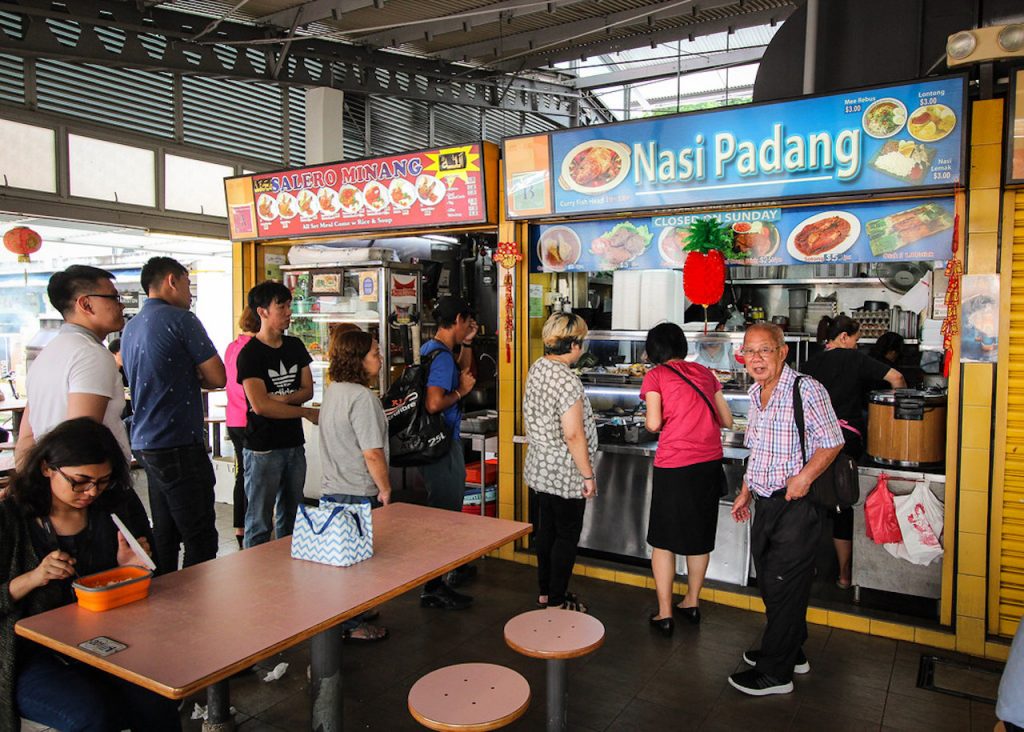
So, what does all of this mean and what did our experiments prove?
Well, everything and absolutely nothing, depending on how you look at it.
For one, the instances above didn’t always happen. The three of us ran the same tests on a bunch of different nasi padang stalls around the island. The results always varied.
Sometimes, compliments got us nowhere. No matter how much we flattered makcik, there was no discount to be given. At best, we received a slightly bigger than average serving of rice.
On rare occasions, whenever we paid with a big note, makcik rounded up instead of down. Most times, we were given the same exact change. We even tried going at different times of the day, after hypothesising makcik would sell whatever food she had left at a cheaper price later in the afternoon. Sometimes our theory proved to be true. Often, it was complete rubbish.
Of course, there were cases of Fauzi getting a discount without having to do or say anything. However, with so many factors in play, it’s both difficult and foolish to say that it was due to his race. Maybe makcik found him handsome. Or maybe makcik was too tired to count the change properly. There’s just no discernible pattern across the board.
The only thing that was definitively proven is that nasi padang stalls are capable of adjusting their prices however they see fit. Because prices aren’t listed clearly (as they are at regular cai fan stalls), there exists room for unofficial discounts based on a plethora of reasons. Malay friends have even told me that they get charged different prices for the same dish sometimes.
But okay, let’s say Malay pricing (as Singaporeans understand it) exists. So what?
You’re not being charged “more”. You’re being charged the regular price. Does the chicken rice uncle whose stall you’ve been patronising for the last 10 years give you more rice—at no extra charge—whenever he sees you? Does the rojak uncle throw in an additional potato because you chat with him? Does the mee pok auntie tell you not to bother with that extra 10 cents?
Do you see where I’m going with this?
“Malay pricing” is not a race issue. In fact, it’s not even an issue. But if anyone insists, then it is at best a nasi padang issue—one that speaks to the flexible nature of nasi padang pricing. That’s all there is to it.
Now if you’ll excuse me, I’m off to work off all the weight I put on in the name of “research”.
Do you have other theories on why makcik gives you a discount? Get in touch with us at community@ricemedia.co. We’ll discuss it over over a plate of nasi putih makan satu, rendang, kacang panjang dengan kuah lontong. Sambal belacan sekit.

